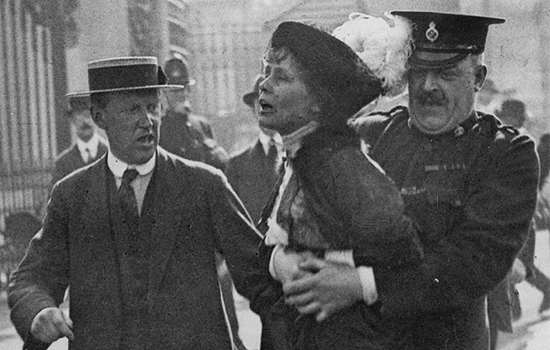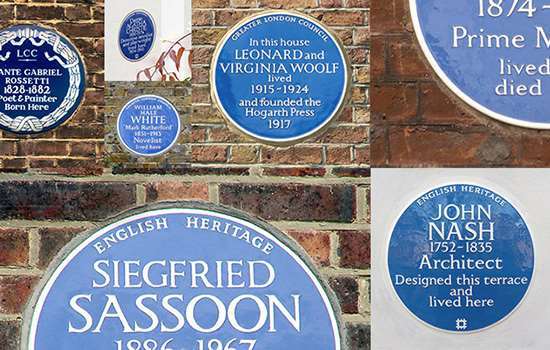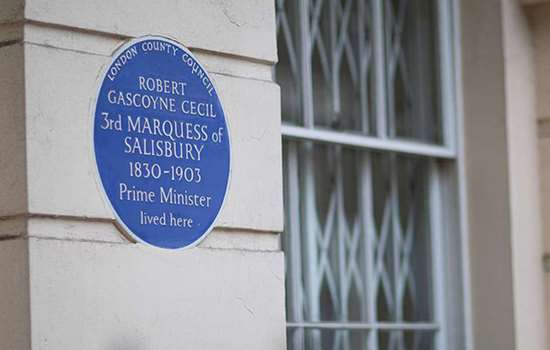OSBORNE, John (1929–1994)
Plaque erected in 2021 by English Heritage at 53 Caithness Road, Hammersmith, London, W14 0JD, London Borough of Hammersmith and Fulham
All images © English Heritage
Profession
Playwright
Category
Theatre and Film
Inscription
JOHN OSBORNE 1929–1994 Playwright lived here in a ground floor flat 1951–1955
Material
Ceramic
John Osborne wrote a number of critically and commercially successful plays in the 1950s and 1960s. Working closely with the Royal Court Theatre, he was credited with transforming the British theatre and bringing in new, younger audiences. He is commemorated at 53 Caithness Road in Hammersmith, where he was based in 1955 when he wrote Look Back in Anger – the most famous of his plays.
EARLY LIFE AND UPBRINGING
John James Osborne was the second child and only son of Thomas Godfrey Osborne and Nellie Beatrice, sometimes known as Dorothy Nellie, née Grove. Thomas was an advertising illustrator and copywriter while Nellie, the daughter of a London publican, worked as a barmaid for much of her life. John’s sister Faith died of tuberculosis in 1930, aged only two years, and his father died ten years later of the same illness. John later turned bitterly and vociferously against his working- and lower-middle-class background, and against his mother. He had, he wrote in his autobiographies, adored his father and hated his mother because she did not care for her husband well enough. He also railed against her lack of generosity and intelligence – shortcomings which Osborne generalised to the working class as a whole.
EARLY CAREER AT CAITHNESS ROAD
Osborne worked initially in journalism but took evening classes in dancing and elocution, aiming for the theatre. From 1948 to 1955, Osborne worked in provincial theatre, as a stage manager and an actor, writing plays at the same time. The Devil Inside (staged at Huddersfield in 1949) was co-written with the actress Stella Linden while Osborne and his friend Anthony Creighton wrote Personal Enemy (Harrogate, 1955) and Epitaph for George Dillon (Oxford, 1957). But it was Look Back in Anger, written solo in the spring of 1955, that began his meteoric trajectory as a playwright.
For much of this time – from the late summer of 1951 until the summer of 1955 – Osborne had a base in a friend’s flat at 53 Caithness Road, Hammersmith. He lived there with his first wife Pamela Lane, and it was this relationship that inspired much of Anger, with Pamela the model for the character of Alison Porter.
SUCCESS AND FAME
Anger was put on in 1956 at the Royal Court Theatre, Sloane Square, by the newly formed English Stage Company. Almost immediately it caused a critical stir for its representation of ‘post-war youth as it really is’ and its blistering monologues – very different from much of genteel theatre at that time. As the autobiographically charged protagonist, Jimmy Porter, complains in the best known speech in the play:
If the big bang does come, and we all get killed off, it won’t be in aid of the old-fashioned, grand design. It’ll be for the Brave New-nothing-very-much-thank-you. About as pointless and vainglorious as stepping in front of a bus.
An extract from the play was shown by the BBC and a live performance was broadcast by Granada, reaching an audience of well over four million. To promote the play, the Royal Court’s press officer gave Osborne the moniker of an ‘angry young man’ and this, together with his personal charisma, enshrined him in popular and cultural myth.
From then on, until the late 1960s, John Osborne was triumphant. Most of his plays were critical and popular successes, often with tours and revivals, and most went to Broadway.
A Patriot for Me (1965) was the largest-scale and most technically complex of his plays but more important was its subject matter – the homosexuality and blackmail of an army officer in the turn-of-the century Habsburg Empire. In 1965 male homosexuality was still illegal in the UK and the Lord Chamberlain’s office, in charge of theatre censorship, refused to license the play on the grounds that it might encourage the practice. Osborne declined to make the required changes and to get round this the Royal Court was turned into a private club for the production.
With his plays also being adapted for screen, Osborne made and spent a huge amount of money – on houses in London and the country, on cars, clothes and alcohol. He had many affairs and five marriages in all, and at the height of his fame he and his partner of the moment were pursued by gossip columnists and photographers.
LATER LIFE AND CAREER
Osborne’s star began to fade in the late 1960s. His trademark tirades against the state of English cultural life were no longer shocking or ‘young’ and were not well received. He even failed to find producers for two new offerings. Although Watch It Come Down had the honour of being the first new play to be put on at the new National Theatre on the South Bank in 1976 it lasted there for only 29 performances.
Osborne wrote a number of television plays in the 1970s and in 1976 he left London, cutting his ties to the theatrical world. He lived first in Kent before settling in Clun, Shropshire. After years of ill health and debt he died on 24 December 1994. He was buried in the churchyard of St George’s, Clun.
Nearby Blue Plaques
More About Blue Plaques



